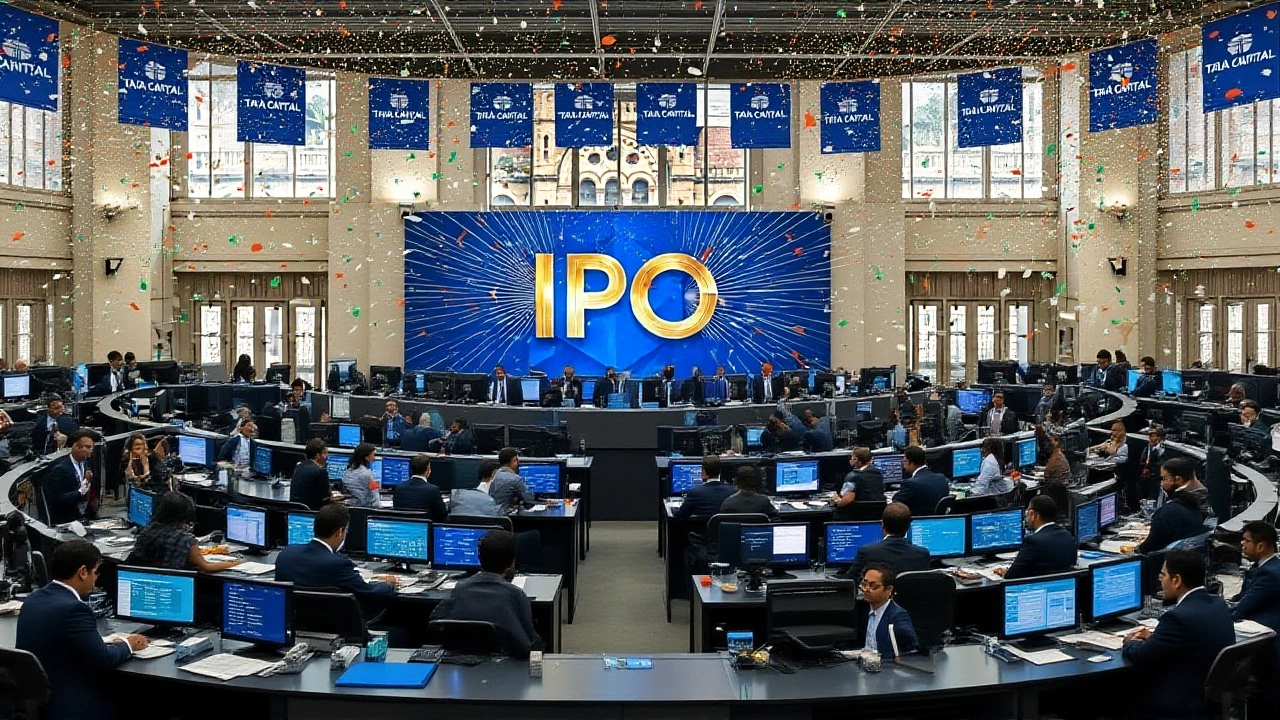When Tata Capital Limited launched its ₹15,511 crore IPO on October 8, 2025, the market buzz was palpable. By the end of the day, the grey‑market premium (GMP) had slipped to just ₹7.5 per share, a stark contrast to the 10‑15 % premium seen when the issue was announced. Yet five seasoned analysts – from Canara Bank Securities, Anand Rathi Wealth, BP Capital, Mehta Equities and a fifth unnamed house – all urged investors to subscribe, citing the company’s solid fundamentals and the Tata Group’s backing.
Background and IPO Overview
The offer, priced between ₹310 and ₹326 per share, carried a lot size of 46 shares for retail participants. Mumbai, where the firm is headquartered, saw its streets buzzing with speculation as the three‑day subscription window closed. The issue comprised a fresh raise of ₹6,846 crore and an offer‑for‑sale (OFS) of ₹8,666 crore by Tata Sons Private Limited, the promoter.
Key numbers from the draft red‑herring prospectus filed with the Securities and Exchange Board of India (SEBI) showed assets under management (AUM) of over ₹1.2 lakh crore as of March 31, 2025, with a 22.3 % YoY net‑profit rise to ₹2,843 crore. The company’s digital platform, Tata nexGen, contributed roughly 34 % of loan disbursements that fiscal year, reaching customers in 28 states and eight union territories.
Subscription Performance and Grey‑Market Trends
The subscription tally painted a mixed picture. Qualified institutional buyers (QIBs) bid 1.28 times the shares allotted, while non‑institutional investors (NIIs) showed a 1.19 times appetite. Retail demand lagged, achieving only 86 % of its quota – a clear signal that even the Tata brand couldn’t shake cautious sentiment.
Grey‑market data from multiple outlets – Live Hindustan, CNBCTV18 and The Times of India – converged on a GMP of roughly ₹7‑₹9.8 per share, translating to a 2‑3 % premium at the upper price band. Analysts pointed to three drivers behind the dip: the sheer size of the issue limiting immediate listing upside, a valuation that many saw as “fair” rather than “attractive,” and the tepid retail appetite.
Analyst Recommendations and Rationale
Rajesh Shah, lead analyst at Canara Bank Securities, summed it up: “Tata Capital’s extensive retail‑SME network, robust asset‑management framework and growing digital lending engine make it a compelling long‑term play,” he told The Times of India on October 8.
Similarly, Neha Srivastava, head of research at Anand Rathi Wealth, highlighted the firm’s “strong balance sheet, high credit rating and consistent growth across 500 branches serving over 40 lakh customers.”
Arvind Gupta, chief investment officer at BP Capital, added that the net NPA of 0.87 % and gross NPA of 2.31 % sit comfortably below industry averages, reinforcing the credit‑quality narrative.
From Sanjay Mehta at Mehta Equities: “At 1.8 × book value, the pricing reflects a 25‑year operating pedigree and Tata Group’s deep pockets – a valuation that makes sense for patient investors.”
Even though a voice from ICICI Securities warned that “if current trends persist, the IPO could see a flat or mildly negative listing,” the consensus among the quoted analysts remained bullish.
Implications for Retail and Institutional Investors
For a retail buyer, the minimum outlay sits at ₹14,996 (46 shares × ₹326). Small non‑institutional investors (sNIIs) need ₹209,944, while big non‑institutional investors (bNIIs) face a ₹1,004,732 commitment. The disparity underscores why institutions poured in more aggressive bids.
- Overall subscription: 1.06 × the issue size
- QIB participation: 1.28 ×
- NII participation: 1.19 ×
- Retail fill: 86 % of allocation
- GMP at listing: ~₹7.5 per share
Market watchers argue that the high institutional demand could cushion the share price on debut, but the muted retail appetite may limit any immediate upside. The listing, slated for Monday, October 13, 2025 on both the National Stock Exchange (NSE) and the Bombay Stock Exchange (BSE), will be the largest Indian IPO of 2025, eclipsing the ₹7,460 crore Delhivery issue of April 2022.
Looking Ahead: Listing and Market Impact
Post‑IPO, Tata Sons will trim its stake from 100 % to roughly 78.5 %, freeing up capital for regulatory buffers and tech upgrades. Refunds for unsuccessful bidders start on October 10, with demat credits expected by October 12 – a tight timetable that keeps investors on edge.
If the stock opens near the upper price band, the GMP could tighten further, rewarding patient holders. Conversely, a soft debut might validate the caution signaled by the 86 % retail fill. Either way, analysts agree the IPO sets a benchmark for megacap offerings in a market where investors are increasingly scrutinizing valuation versus growth potential.
Frequently Asked Questions
How does the GMP decline affect potential retail investors?
A lower GMP means the anticipated premium over the issue price shrinks, reducing the upside for those who buy at the listed price. Retail investors, who already showed only 86 % subscription, may see a narrower profit window unless the stock rallies post‑listing.
What were the main reasons analysts still recommended the IPO?
They pointed to Tata Capital’s strong balance sheet, low NPA ratios, expansive digital lending platform, and the tacit support of the Tata Group. At a valuation of about 1.8 × book, they felt the price reflected the company’s 25‑year track record and growth prospects.
When will the shares actually start trading on the exchanges?
Allotments are set to be finalized on October 9, and demat entries will be credited by October 12. Trading is scheduled to commence on Monday, October 13, 2025 on both the NSE and BSE.
Which segment of investors showed the strongest appetite for the IPO?
Qualified Institutional Buyers (QIBs) led the pack, bidding 1.28 times the shares allotted to them, indicating strong confidence from the institutional side despite retail hesitation.
What is the significance of this IPO in the broader Indian market?
With a total issue size of ₹15,511 crore, it tops all Indian listings in 2025, setting a new benchmark for scale. The outcome will likely influence how future mega‑offers price themselves amid a market that is becoming more valuation‑sensitive.

